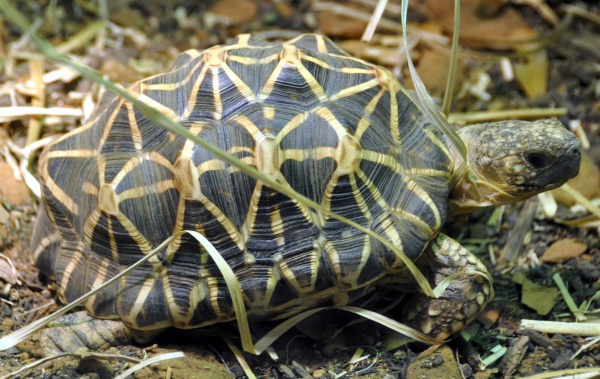Facts About Indian star tortoise
The Indian star tortoise is a stunning yet endangered species residing in arid regions and scrub forests across India, Pakistan, and Sri Lanka. Its allure in the exotic pet trade has sadly propelled it towards the brink of extinction. In recognition of the urgent need for its protection, the species was listed under CITES Appendix I in 2019, which seeks to shield it from international trafficking.
This tortoise is distinct due to its uniquely shaped shell. The carapace, or upper shell, is convex with prominent humps, and has vertical side margins and a serrated rear edge. As a herbivore, its diet includes grasses, fruits, flowers, and leaves.
Notably, there are some differences between males and females, a phenomenon known as sexual dimorphism. Females are generally larger and possess flatter plastrons (the underside of the shell). The shell's design also serves a practical purpose—it aids them in righting themselves if they become overturned, much like the mechanical properties of a gömböc.
The Indian star tortoise inhabits various parts of India (though notably absent in Lower Bengal), as well as the Sindh province of Pakistan and Sri Lanka. Despite this extensive range, illegal wildlife trade remains a significant threat. Unfortunately, few studies have been conducted to accurately assess their wild populations or fully comprehend the trade’s impact on their survival.

 India
India